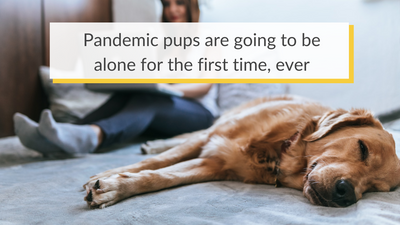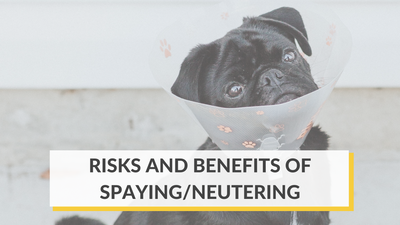Your dog is probably not particularly bothered about having shiny white teeth so that they can impress other dogs. But while they might not be gunning for that ‘Hollywood smile,” that does not mean that you don’t need to worry about how their teeth are cared for. In fact, having healthy teeth is even more important for dogs – seeing as their mouths are the main way they interact with the world in lieu of opposable thumbs…
With that in mind, it’s crucial for your dog’s happiness that you know how to look out for and prevent conditions like periodontal disease. There are reasons you should be thankful for your dog, and it is time to return the favor by preventing that disease from getting worse.
What is Periodontal Disease in Dogs?
Periodontal disease is simply a blanket term that describes inflammation of a dog’s gums surrounding its teeth. This is one of the most common health complaints in dogs and can have a number of different causes.
Most often, though, periodontal disease in dogs is the result of an infection. When bacteria is allowed to gather around a dog’s gum line, this can then form into plaque. Plaque, when combined with minerals, can then become ‘calculus’ – which causes the gum to become irritated and inflamed. This is called ‘gingivitis.’
Over time, this calculus can build up in the gum and become separated from the teeth, leaving spaces where bacteria can enter. When this happens, the gums can become infected, painful and swollen and may even produce some kind of discharge. At this point, the dog can be considered as having periodontal disease. The precise symptoms of periodontal disease can vary slightly depending on the type of bacteria that is causing the infection.
Does Your Dog Have Periodontal Disease?
While the specifics may vary slightly, the symptoms will be similar across cases of periodontal disease. Usually, this condition will begin with inflammation in one tooth, which can then progress and worsen if left untreated. This progression occurs in conveniently defined canine periodontal disease stages:

Stage 1: Gingivitis - Periodontal disease in one or several teeth
The gum at the top of teeth is inflamed and swollen, and plaque covers the teeth.
Stage 2: Early Periodontitis - 25% attachment loss
The entire attached gum is inflamed and swollen. Your dog's mouth is painful, and bad breath is noticeable.
Stage 3: Moderate Periodontitis - 25-50% attachment loss
Infection and calculus are destroying the gum, which turns read and bleeding. Your dog's mouth is sore, which can affect eating and behavior.
Stage Four: Advanced Periodontitis - more than 50% attachment loss
Bacterial infection is destroying the gum, teeth and bone. Bacteria may spread in the bloodstream throughout the body and damage the kidneys, liver and heart.
In stage four, the roots of all the teeth will be exposed as the gums recede.

Signs of Periodontal Disease in Dogs
To prevent or stop periodontal disease in dogs, look for symptoms of the condition. Look out for signs of inflammation, discomfort in your dog while eating and receding gums. They may appear to lose their appetite, and their breath might be worse than usual. As the condition worsens, you might notice pus formation in the cavities between gums and teeth and the loss of teeth. Other symptoms can include:
- Bleeding in the mouth or around the gums
- Signs of bleeding in drool
- More drooling than usual or thicker drool
- Loose teeth
- Bumps on the gums
- Blood in water bowls or on toys
- Noise-making when eating
- Moving away when you try to touch the mouth or head
- Awkward chewing, such as favoring one side of the mouth when chewing
As the condition gets worse, you may even notice problems with your dog’s nasal health. He or she may have discharge from the nose or start sneezing. This can be a sign of advanced gum disease, since in advanced cases the bones between upper teeth and nasal passages may be affected, eventually deteriorating that bone area and causing nasal problems.
It is highly important to check for signs of periodontal disease so that you can catch it early. If you suspect that your dog might have the condition, then take them to your vet so that they can begin treatment before irreversible damage is caused. When it comes to periodontal disease in dogs, treatment is available from your vet. Delaying only makes your dog suffer from periodontal disease and its symptoms while the conditions worsens.
Understanding Dog Gum Disease or Gum Infection Symptoms
If your dog’s gums are inflamed or your dog has swollen gums, bad breath and other signs of gum disease, see a vet right away. Any symptoms having to do with your dog’s oral health need to be addressed quickly. The infection can spread and attack your dog’s teeth and gums, and some teeth may not be saved. Worse, gum disease can be painful for a dog and can affect their ability to eat. This can cause your canine friend to not get the nutrients they need to stay healthy. For a dog and for any animals, teeth health is crucial.
There’s another reason to check for periodontal disease in dogs. Gum disease in dogs might not be easy to spot for all owners. Not everyone checks their dogs’ mouths regularly or checks for symptoms of a problem. In addition, all animals, including dogs, try to hide when they are feeling unwell. This is a survival instinct, since in the wild, weaker or ill animals are very vulnerable.
Not only does your dog not have the language to tell you their gums or teeth hurt, but he or she may instinctively continue to act normal even if they feel unwell. Regular checks of the mouth area, as well as good canine oral hygiene, can make a big difference and can ensure you don’t overlook symptoms.
How to Prevent Periodontal Disease

There are many things you can do to help your dog avoid periodontal disease. One important tip is to give them chew toys and other abrasive toys to play with. This will help to encourage salivation and will also help to ‘brush’ the teeth. If you want to go one step further, then you can actually try brushing your dog’s teeth – although a lot of pets won’t make this easy! To keep your dog's teeth glistening and preventing the disease from getting worse, maintaining its teeth would help a lot.

Most important of all is to ensure that you are feeding your dog a canine-friendly diet. Human food is not intended for dogs and can be very bad for their health as well as their teeth more specifically due in part to the large quantities of sugar often included. The ideal diet for dogs and for improving their health all round is a raw-food diet. This is closer to what dogs would have eaten in the wild and can do a great deal to provide them with the right nutrients while avoiding additives and other unwanted ingredients that come from domesticated diets.
Related Post: Fruits Your Dog Can and Can't Eat
Dogs Are Vulnerable to Dental Conditions
There are many things in a dog’s mouth. There are the foods dogs eat, saliva, bacteria and particles. Dogs also tend to explore the world with their mouths, meaning they may be licking all sorts of interesting and not necessarily clean objects. The inside of a dog’s mouth creates fertile ground for bacteria and eventual inflammation, which is why human companions need to stay vigilant.

When a dog’s body detects bacteria, it responds much as a human body does. It sends out white blood cells to counter the foreign bacteria. The bacteria responds by making sure the cells emit enzymes that can deteriorate gum tissue. This means there’s an entire war in the ecosystem of your dog’s mouth, and this series of natural responses leads to inflammation, ruined tissue and eventually loss of bone matter and teeth.
Dogs are also more vulnerable to dental conditions such as periodontal disease because they can’t brush and floss their teeth the way humans can. They rely on their human friends to get this task done, and not all two-legged companions are adept at taking care of canine teeth. While humans have mouthwash, toothpaste and dental floss, as well as dentist visits, your furry friend relies on you. Speak to your vet to see whether you’re brushing your dog’s teeth correctly and enough. Use dental treats and food to encourage healthy gums and teeth.
Related Post:
Dog Depression - Cause, Symptom, and Treatment
5 Tips to Help Your Dog’s Separation Anxiety
About the Author
Jeff Caceres is a lifelong pet lover and animal health enthusiast. After falling in love with his childhood pet, he went on to become passionate in dog breeding. Today, he lives with his 7 dogs and enjoys sharing tips to help other animal owners keep their furry friends healthy and happy!













